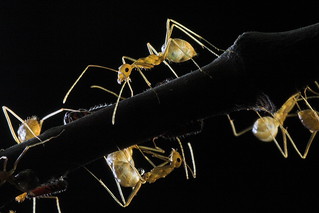Choosing a Home Water Filtration System
Bottled Water Alternatives: Simple Ways to Save Money on Filtered Water and Help Protect the Planet
The taste of tap water is completely subjective, and even some consumers can’t tell the difference between filtered water and the H20 that flows from the tap. 
If you don’t like the taste of tap water, however, the bottled version is a great tap alternative.
But, if you think your bottled water is filtered, think again. In fact, many bottled water companies get their water from municipal and county sources, instead of some remote mountain spring.
For those eco-chic families who want to go green, you’ll want a great tasting, filtered bottled-water alternative that is gentle to the taste and to the earth.
Here are a few bottled water alternatives to satisfy your taste for high-quality beverages, and that are healthy and safe to drink.
Bottled water history
Bottled waters were originally specialty drinks that were marketed to consumers for their health-giving qualities. In fact, many countries had mineral springs where wealthy people would drink the water during a visit to a spa or resort.
For people who were unable to visit these remote locations, the resorts and spas began bottling the mineral waters and selling it to consumers.
In the United States, there are over 183 varieties of bottled water. The oldest bottled water brand in the U.S. is Mountain Valley Spring Water. This water is from Hot Springs, Arkansas and has been consumed by United States Senators since 1904.
Bottled water alternatives
The first option to filter your water is to use a home water filtering system. You can use a refrigerator-mounted, faucet-mounted or pitcher-style water filter.
While tap water is safe, many water filters help to remove potentially harmful toxins and contaminants. Common contaminants found in tap water include chlorine by-products such as chloroform, parasites and lead – see the full list. These home water filters also do a great job of removing the metallic aftertaste that remains after drinking tap water.
Pitcher-style water filters are cheaper than faucet-mounted filters. Depending on the amount of water that you drink each month, the water filters will need to be changed every three to four months.
The second alternative is a purified water unit. This unit looks similar to a water cooler, but it is essentially a refrigerator with a filtration system. The water inside the unit is chilled and filtered and the cost to run this unit is cheaper than investing in a traditional home water cooler.
Lastly, you could install a whole house water filter which essentially gives you spring like water through every faucet of your home. Although this option is pricier, the Pelican Water Systems whole house filter is nearly maintenance-free and easily installed in any home and has a 600,000-1,000,000-gal. /5-year capacity.
Bottled water money-saving tips
If you must drink bottled water, here are a few tips to save money when you buy bottled water.
1. Start with inexpensive bottled water suppliers first, and if you find one you prefer over the others, stay with this water company.
2. If you like the portability of water bottles, buy a few, or a large gallon jug of water, and refill them using your home water filtration system.
3. Private label water bottles sold in grocery stores, big box retailers and warehouse clubs like Costco and Sam’s Club are cheaper than fancy water brands.
4. Do not buy bottled water at drugstores and convenient stores, where the water is more expensive.



















